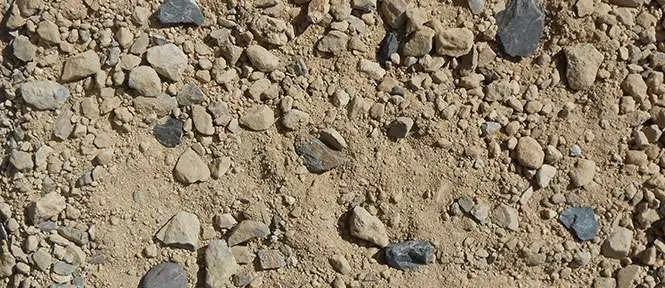Recycled Aggregates and Base
Aggregates consist of hard, graduated fragments of inert mineral materials, including sand, gravel, crushed stone, slag, rock dust, or powder. Portland cement concrete (PCC) and asphalt concrete (AC) consist primarily of aggregate, with the cement and asphalt serving as binders. Recycled aggregate products are produced by crushing the PCC and AC that can come from road rehabilitation and maintenance, demolition, and leftover batches of AC and PCC.
Recycled aggregate products can be used:
- In paved roads as aggregate base, aggregate subbase, and shoulders
- In gravel roads as surfacing
- As base for building foundations
- As fill for utility trenches
Consideration should be given to the following when selecting recycled aggregate products:
- size and grading
- absorption
Size and Grading
The maximum size of an aggregate designates the smallest sieve size through which 100 percent of the material will pass. Grading of an aggregate is determined by sieve analysis. Maximum size and grading are controlled by specifications that prescribe the distribution of particle sizes to be used for a particular aggregate material. The distribution of the particle sizes help determine the stability and density of the mixture.
Absorption and Moisture Sensitivity
The porosity of an aggregate is generally indicated by the amount of water it absorbs when soaked in water. A certain degree of porosity is desirable, as it permits aggregates to absorb binder, which then forms a mechanical linkage between the binder and the aggregate particle. For recycled aggregate products, where ease of compaction is a consideration, the sensitivity to moisture can play a vital role in achieving optimum moisture.



